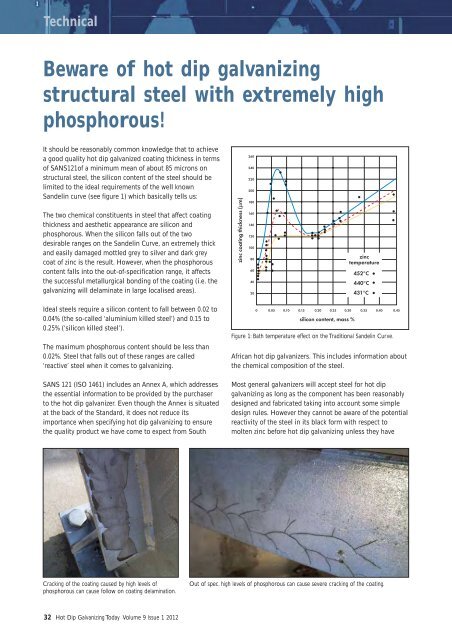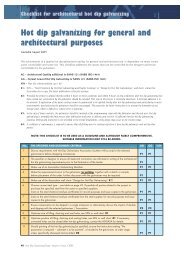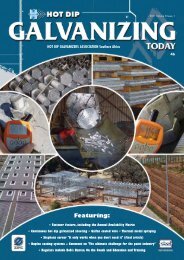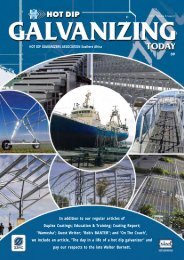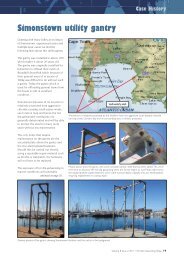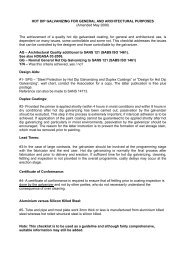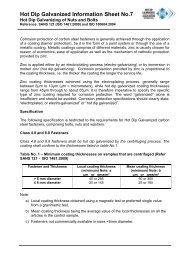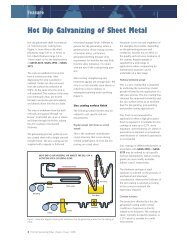Fasteners - hdgasa
Fasteners - hdgasa
Fasteners - hdgasa
Create successful ePaper yourself
Turn your PDF publications into a flip-book with our unique Google optimized e-Paper software.
Technical<br />
Beware of hot dip galvanizing<br />
structural steel with extremely high<br />
phosphorous!<br />
It should be reasonably common knowledge that to achieve<br />
a good quality hot dip galvanized coating thickness in terms<br />
of SANS121of a minimum mean of about 85 microns on<br />
structural steel, the silicon content of the steel should be<br />
limited to the ideal requirements of the well known<br />
Sandelin curve (see figure 1) which basically tells us:<br />
The two chemical constituents in steel that affect coating<br />
thickness and aesthetic appearance are silicon and<br />
phosphorous. When the silicon falls out of the two<br />
desirable ranges on the Sandelin Curve, an extremely thick<br />
and easily damaged mottled grey to silver and dark grey<br />
coat of zinc is the result. However, when the phosphorous<br />
content falls into the out-of-specification range, it affects<br />
the successful metallurgical bonding of the coating (i.e. the<br />
galvanizing will delaminate in large localised areas).<br />
Ideal steels require a silicon content to fall between 0.02 to<br />
0.04% (the so-called ‘aluminium killed steel’) and 0.15 to<br />
0.25% (‘silicon killed steel’).<br />
The maximum phosphorous content should be less than<br />
0.02%. Steel that falls out of these ranges are called<br />
‘reactive’ steel when it comes to galvanizing.<br />
SANS 121 (ISO 1461) includes an Annex A, which addresses<br />
the essential information to be provided by the purchaser<br />
to the hot dip galvanizer. Even though the Annex is situated<br />
at the back of the Standard, it does not reduce its<br />
importance when specifying hot dip galvanizing to ensure<br />
the quality product we have come to expect from South<br />
Figure 1: Bath temperature effect on the Traditional Sandelin Curve.<br />
African hot dip galvanizers. This includes information about<br />
the chemical composition of the steel.<br />
Most general galvanizers will accept steel for hot dip<br />
galvanizing as long as the component has been reasonably<br />
designed and fabricated taking into account some simple<br />
design rules. However they cannot be aware of the potential<br />
reactivity of the steel in its black form with respect to<br />
molten zinc before hot dip galvanizing unless they have<br />
Cracking of the coating caused by high levels of<br />
phosphorous can cause follow on coating delamination.<br />
Out of spec. high levels of phosphorous can cause severe cracking of the coating.<br />
32 Hot Dip Galvanizing Today Volume 9 Issue 1 2012


